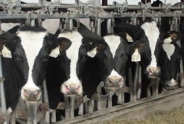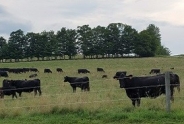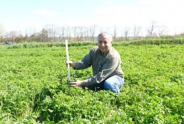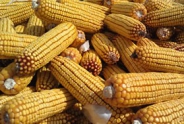Field Crop Update, September 30, 2021
Erik Smith, Area Field Crop Specialist/Team Leader
Central New York Dairy and Field Crops
1. Field Observations
The gorgeous weather of the last few days has allowed a lot of forage acreage to be harvested while soybeans continue to wait on deck. The radar shows some scattered showers in Chenango County, but it's mostly-cloudy skies for the rest of us.
Temperatures will dip into the 30s for some of us tonight, and while there are no active frost advisories I don't think any of us would be shocked if we woke up to a light glaze in the low spots on an October morning. Skies will clear up and winds will die down, so the forecast temps may be optimistic. We shall see….
So before the frost does eventually come, here are some resources on what to keep in mind for your alfalfa crop and corn/soy crops.
Corn silage harvest around the region should be wrapping up soon. While nearly all the areas and silking dates in Section 2 are past the prime harvest conditions, you will be in the ballpark if you know your GDDs for your hybrid to physiological maturity (black layer) and then subtract 150 GDDs.
And of course, there is still time to plant winter grains and cereal cover crops! Winter wheat and rye will have no trouble this fall, as temperatures are expected to stay above normal through November (though higher temps are one of our "new normals").
This will be the last regular CNY Field Crop Update for 2021.
2. Growing Degree Days (GDD) for planting date and silking date (Climate Smart Farming Growing Degree Day Calculator)
For corn silage, we are using base 50/86, as corn development starts at 50F and ceases above 86F. Silage corn needs 750-800 GDD (depending on hybrid maturity) after silking to reach a whole plant DM of 32%. Remember that we can expect to accumulate 20-25 GDD per day, or even up to 30, so this is not a large window. Under typical late season dry down conditions we can expect the crop to reach 35% DM four to seven days later. Check your crop to see how close you may be to harvest:
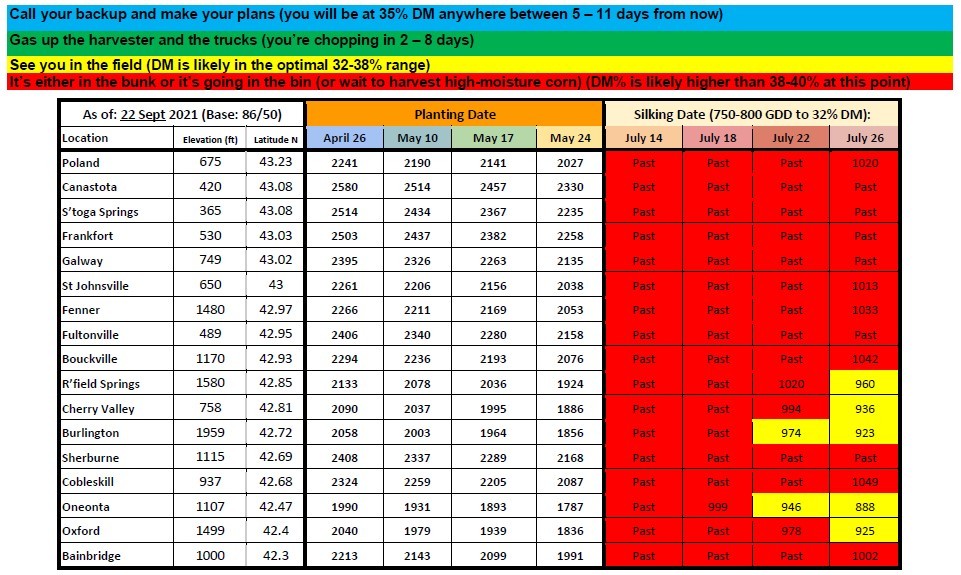
Not everyone planted their corn on one of the planting dates or in one of the locations I have listed, so this chart shows the estimated GDD for each location on each potential planting date in between (based on the actual GDD on those four dates). The locations are ordered top-to-bottom from lowest elevation to highest (the number after the location name is the elevation in feet above sea level). So if your farm is near one of the locations on this list but there's a location here that more closely matches your elevation, try that instead. You can find GDDs for your own specific location and planting date using the Climate Smart Farming CSF Growing Degree Day Calculator, but for those who might have more difficulty using that tool, maybe this chart can help.
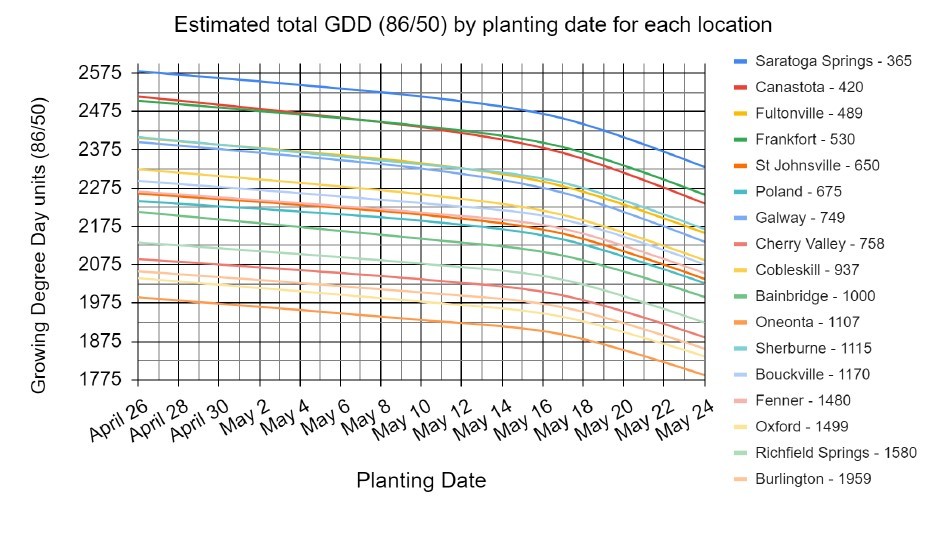
Field Crop Update, September 30, 2021 (pdf; 543KB)
Upcoming Events
2026 Dairy Day
January 13, 2026 : Dairy Day - Hamilton
Hamilton, NY
Lunch included
January 14, 2026 : Dairy Day - Ballston Spa
Ballston Spa, NY
Lunch included
2026 Corn & Soybean Day
January 20, 2026 : Corn & Soybean Day - Hamilton
Hamilton, NY
Lunch included. 2.75 DEC Credits available
January 21, 2026 : Corn & Soybean Day - Ballston Spa
Ballston Spa, NY
Lunch included. 2.75 DEC Credits available
Announcements
Statewide Field Crop Pathology Needs Assessment Survey
Your input is wanted for identifying priorities!Sign Up for Our Weekly E-Newsletter
We send out a bi-weekly e-newsletter that has announcements, upcoming programs, and opportunities for you! Registration is quick, easy, and free. Click here to sign up today!Farmers Can Join MeatSuite For Free!
MeatSuite.com is a free resource provided by Cornell University where NY meat farmers can create a farm profile and list their bulk (wholes, halves, quarters) and bundled (i.e. Grilling Bundle) meat products.Why should farmers join?
1. It's free and easy!
2. Connect with more local customers. In the past year the MeatSuite.com farm directory had 8,300 visits from New York consumers. Farm profiles get as many as 25 views per month from potential local customers. We also spotlight MeatSuite farms on social media and bring attention and purchases to farms through highlights and giveaways.
How do I join?
Farmers can visit https://www.meatsuite.com/farmers/ to create a free farm profile. You must list at least one product for your farm's profile to go live. You'll also have access to Cornell's free Meat Price Calculator, a helpful tool for pricing your meat to make a profit.
While you're on MeatSuite, check out the "Creating Consumer-Friendly Bulk Meats" publication on the log-in page. It has tips on how to create bulk meat products that are easier for first-time buyers to say "yes" to.
If you have any questions as you create your farm profile or products, we're here to help! Please email Matt LeRoux at mnl28@cornell.edu.

